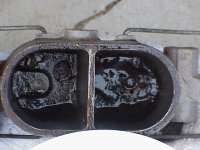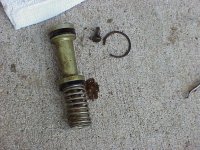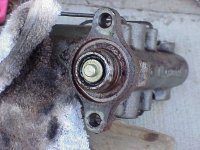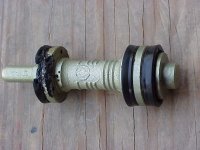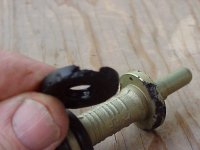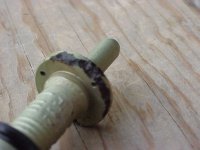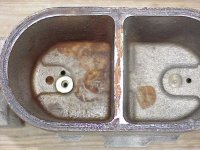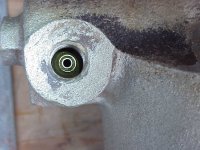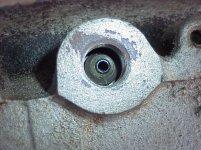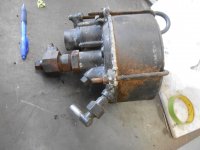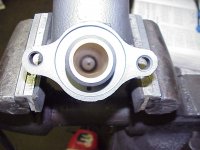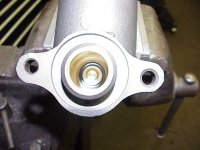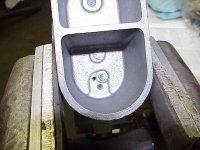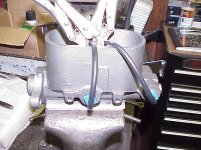While driving my 1969 ambulance last Friday evening, the master cylinder suffered a catastrophic failure. Fast thinking and knowing what to do, save the car from disaster. The following pictures and text will show what happens to your braking system when regular maintenance is not performed. This job was on my list of to do items once the car came back from Ed painting it, however, it was moved up to the top on Friday evening.
In the first picture you can see the "mud" that is at the bottom of the cylinder reservoir, as a result of not having brake fluid changes every 2 years. Brake fluid is hygroscopic, which means that it will absorb the moisture in the air, and the fluid will degrade as more moisture is introduced into the system.
In picture 2, you can see the rust around the outer edge of the rear of the cylinder, indicating that this master cylinder has been leaking past the seals for a while now. Also, in this picture, I have removed the rear piston assembly that operates the rear brake cylinders and shoes.
In picture 3, you can see the rear piston, and if you look carefully at the rubber cup next to the spring, you will see that the rubber cup has some material missing on the edge. This is what caused the rear brakes to fail.
In picture 4, you can see the front piston after I used compressed air to dislodge it from the cylinder bore, where it was stuck "in the mud". I was careful not to use too much air, since I feared that it might come flying out, and get damaged, in case it needed to be reused.
In the first picture you can see the "mud" that is at the bottom of the cylinder reservoir, as a result of not having brake fluid changes every 2 years. Brake fluid is hygroscopic, which means that it will absorb the moisture in the air, and the fluid will degrade as more moisture is introduced into the system.
In picture 2, you can see the rust around the outer edge of the rear of the cylinder, indicating that this master cylinder has been leaking past the seals for a while now. Also, in this picture, I have removed the rear piston assembly that operates the rear brake cylinders and shoes.
In picture 3, you can see the rear piston, and if you look carefully at the rubber cup next to the spring, you will see that the rubber cup has some material missing on the edge. This is what caused the rear brakes to fail.
In picture 4, you can see the front piston after I used compressed air to dislodge it from the cylinder bore, where it was stuck "in the mud". I was careful not to use too much air, since I feared that it might come flying out, and get damaged, in case it needed to be reused.


